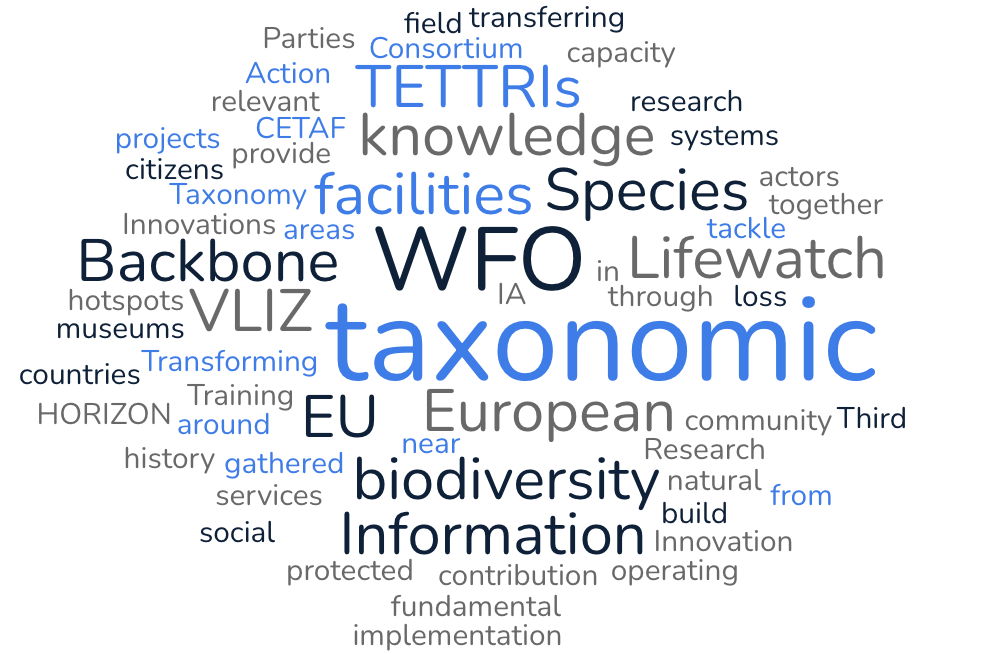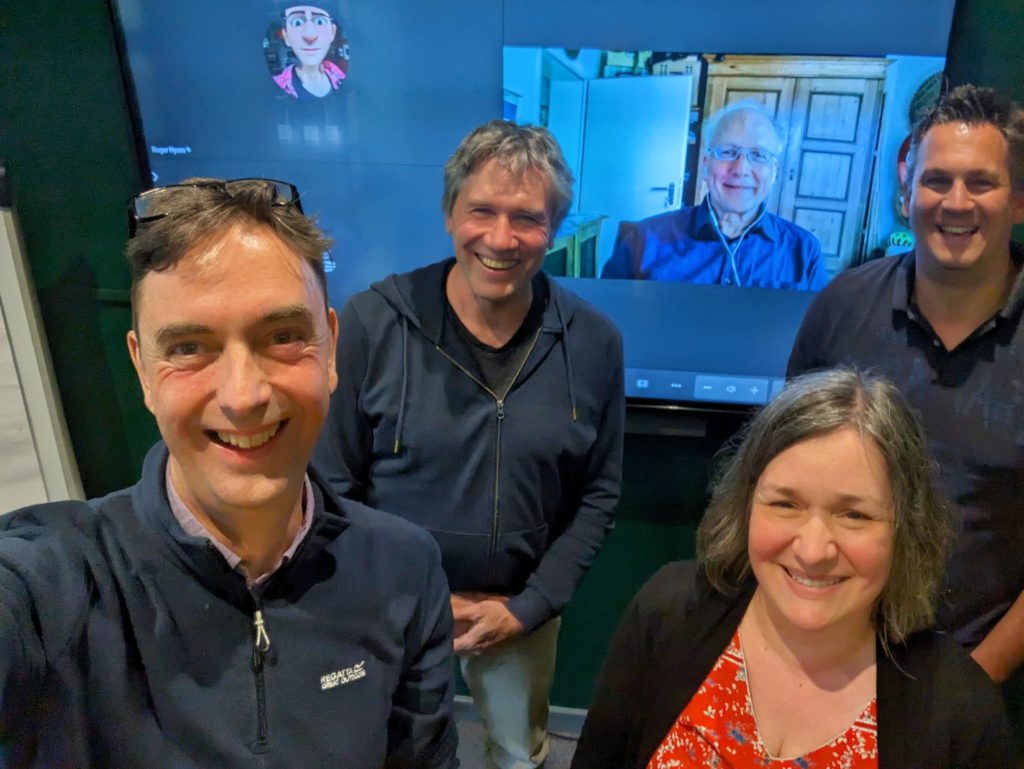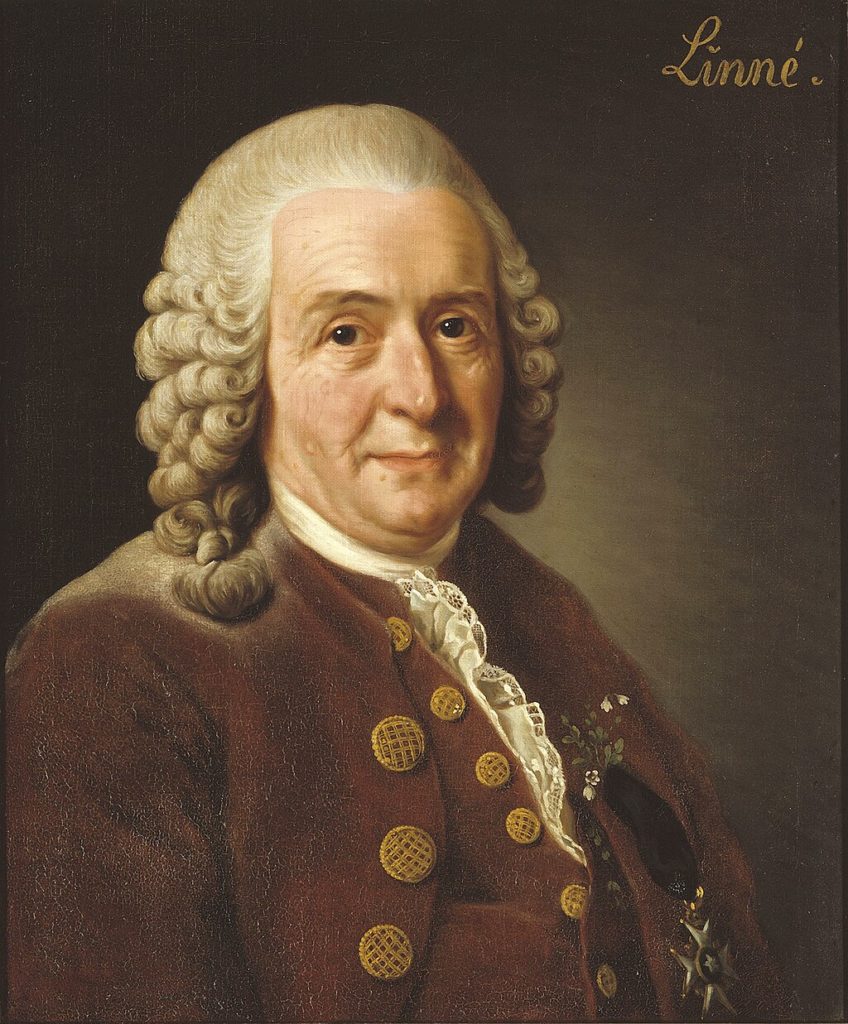We are excited to start a new collaboration between the Botanics (RBGE) and Flanders Marine Institute (VLIZ). This project forms part of TETTRIs – “Transforming European Taxonomy through Training, Research and Innovations” and was funded under the a 3rd Party Projects call. TETTRIs is a €6 million European Union initiative running from 2022 until mid 2026. It’s aim is to support the taxonomic community gathered around the Consortium of European Taxonomic Facilities (CETAF), to provide knowledge, systems and services to tackle biodiversity loss. VLIZ is carrying out the work as part of its responsibilities under the Lifewatch Species Information Backbone. All the work at RBGE will be carried out as part of its ongoing work as a consortium member of the World Flora Online (WFO) hosting the WFO Plant List.

That might sound like an alphabet soup of acronyms, organisations and projects to the unfamiliar but I hope this post will bring some clarity and an appreciation of why the work is important and the acronyms matter.
For centuries biologists have been collecting specimens to help them understand the diversity of living creatures and their interactions. These specimens have been gathered into institutions around the world like the herbarium and living collections of Edinburgh botanics. Scientists have traditionally labelled the specimens using a system of latin names instigated by Carl Linnaeus in the 18th Century.
Today these collections are more important than they have ever been because the impacts of human activity now threaten the stability of the very ecosystems that support us. We need to work at a greater pace and scale to understand how they are changing. Fortunately we have also entered a digital age which gives us the ability to enhance how we use these research collections. Instead of isolated museums and researchers exchanging specimens and notes by post data can flow smoothly from institution to institution and from research project to policy decision – or at least it should! Enabling seamless information sharing is a major task in itself and that is what these projects are all about.
CETAF is the organisation that ensures the experts in the many institutions around Europe (that hold half the world’s specimens) are talking to each other and finding ways to work together. Institutions need to be maintained and this work requires funding. Most institutions are maintained at least in part by national resources but this rarely covers wider collaboration – which is where the EU funding comes in. The EU’s major vehicle for funding science and innovation is called Horizon Europe. TETTRIs is a project funded by Horizon and coordinated by CETAF. It aims to improve how taxonomy and systematics is done in Europe. In turn TETTRIs put a call out for 3rd Party organisations to propose subprojects. VLIZ and the Botanics proposed the Taxon Name Linking Service (TNLS) and it got funding to run from May 2024 for eighteen months.

Both VLIZ and RBGE are involved in long term initiatives curating databases filled with the Latin names used on specimens. For VLIZ this is a system called Aphia in the framework of LifeWatch. For RBGE it is the WFO Plant List. To get these systems to interact with each other and the many other research databases used around the world we need to handle the idiosyncrasies in the millions of Latin names created since Linnaeus’s time. TNLS will allow us to develop some standardised approaches that ultimately oil the wheels of biodiversity assessment allowing biologists to work more efficiently with fewer errors.
I hope I have untangled the alphabetti-spaghetti of acronyms leading to our new project at least a little. In future blog posts I’ll outline some of the challenges we face and how we are addressing them.
This project has received funding from the European Union’s Horizon Europe Research and Innovation programme within the framework of the TETTRIs Project funded under Grant Agreement Nr 101081903.



